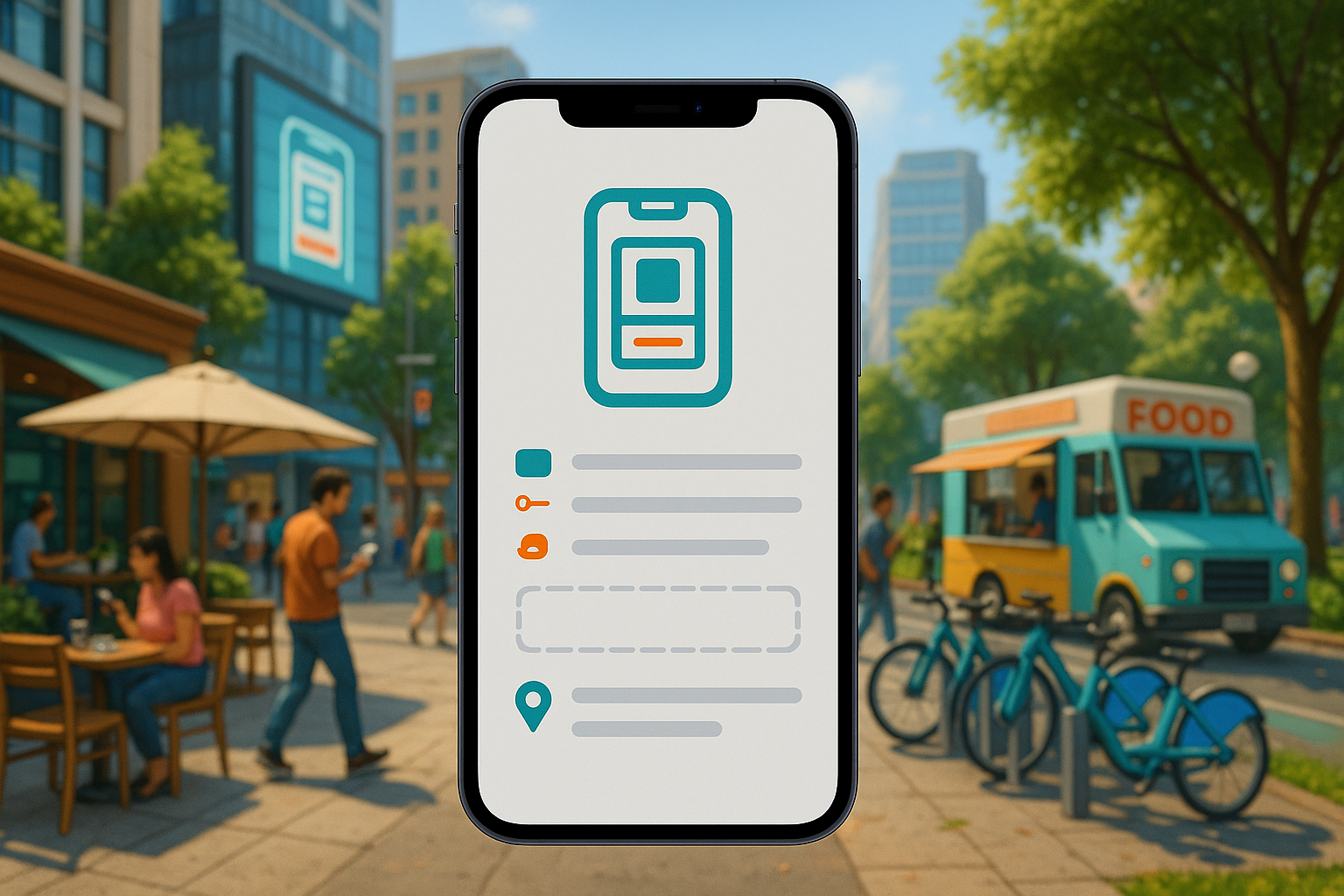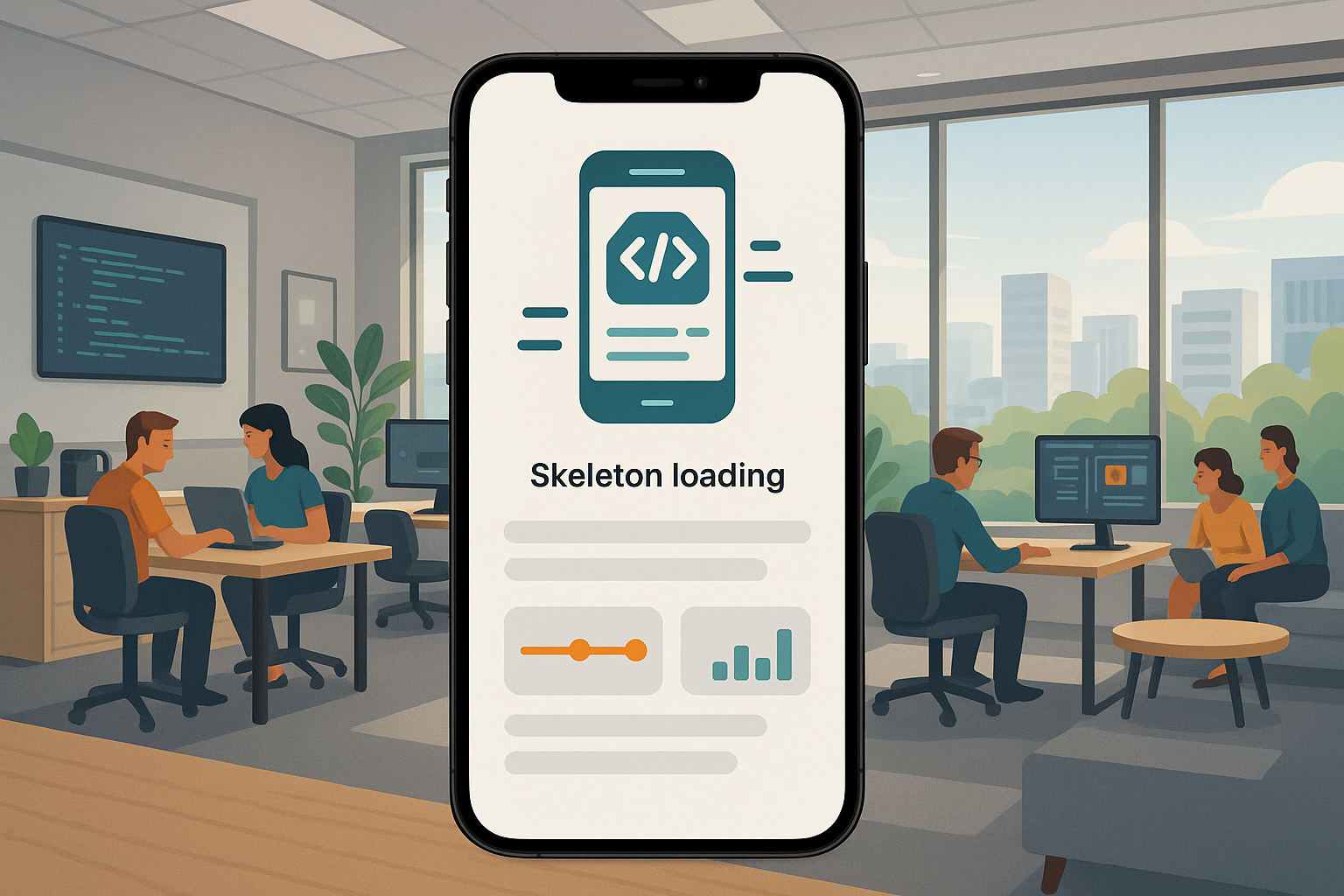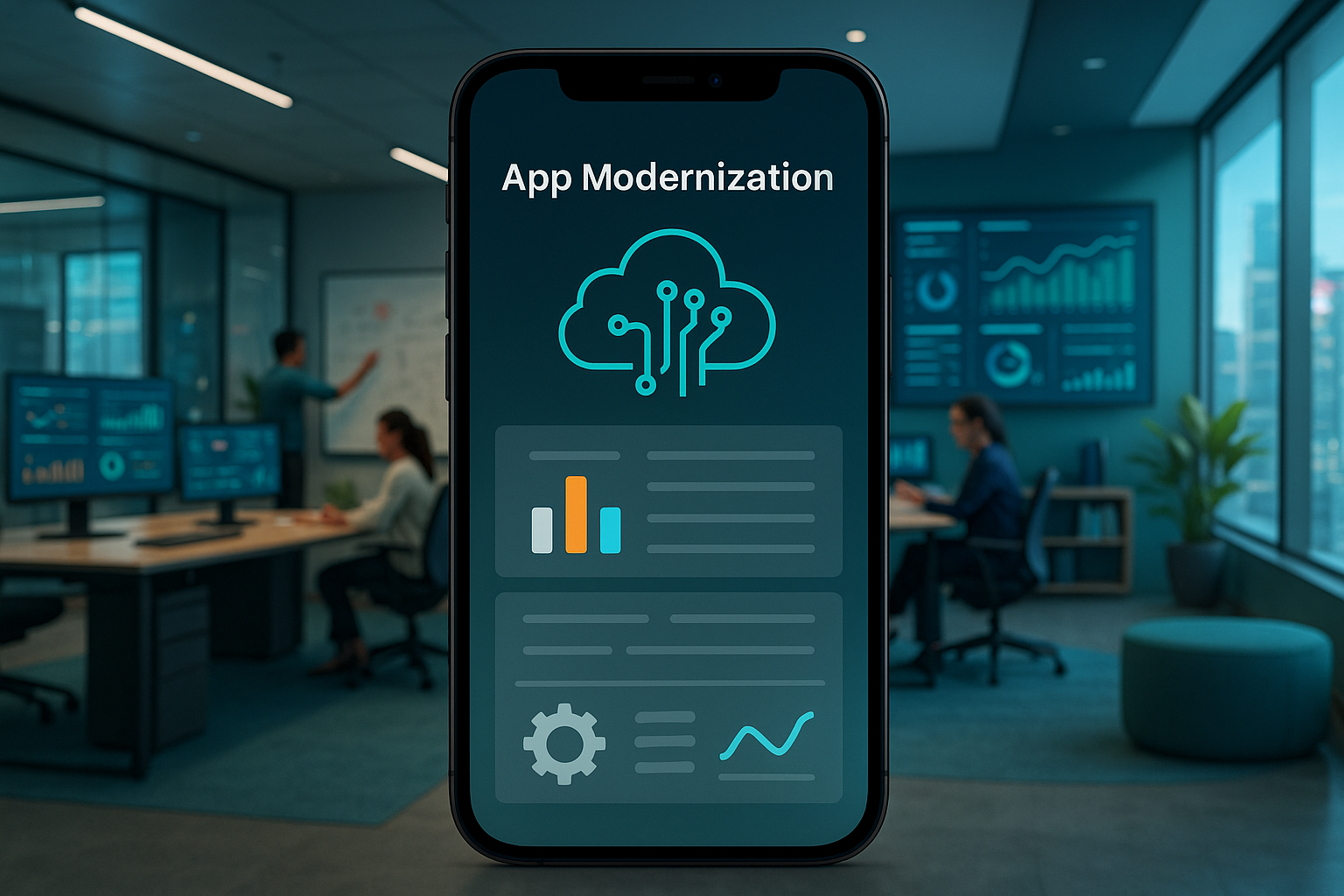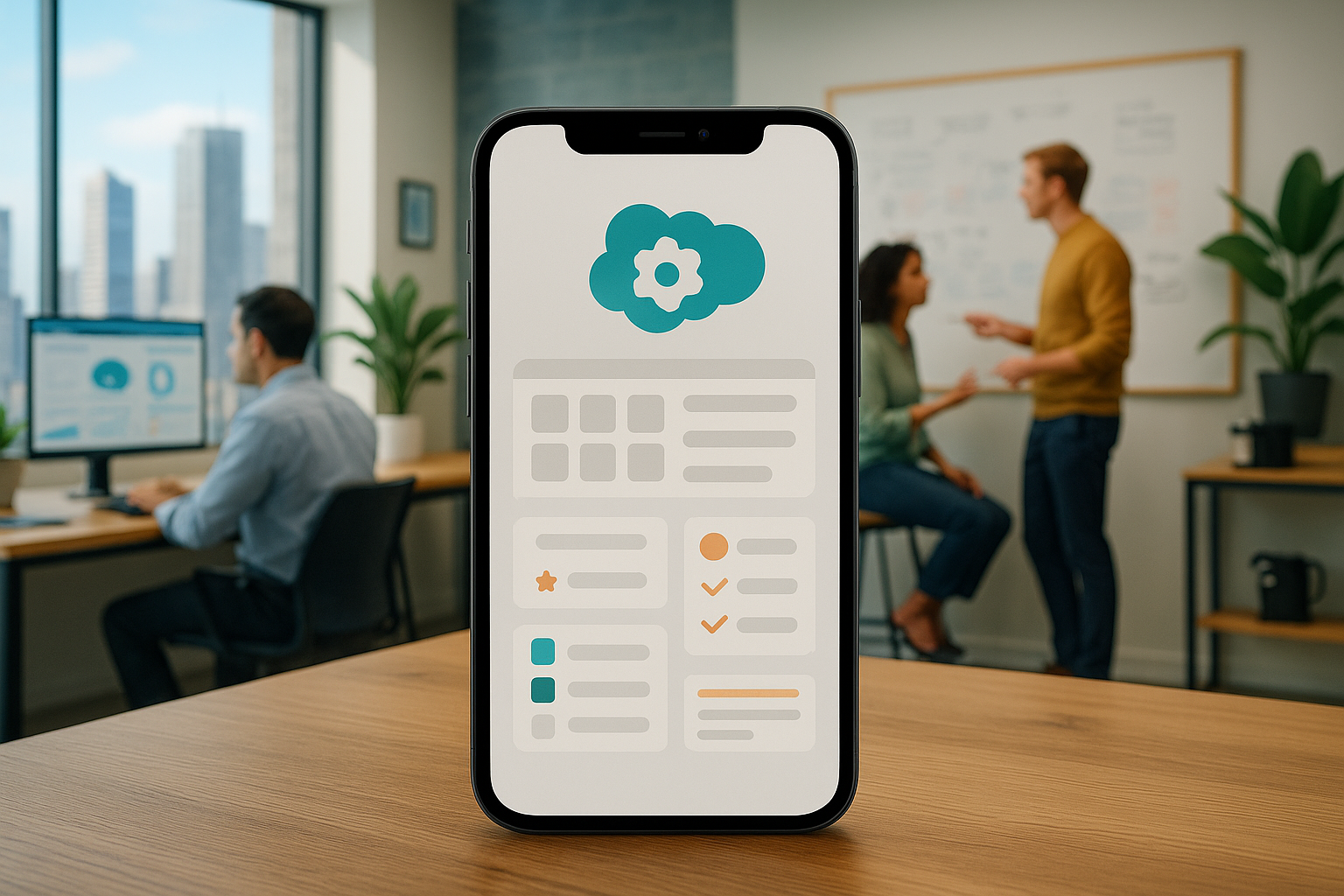Introduction
In the ever-evolving landscape of mobile applications, capturing a user’s attention in the first few seconds is paramount. The traditional model—convincing a user to search the App Store, download a full application, and complete a registration process—presents significant friction. Many potential customers are lost along this journey. Apple’s introduction of App Clips in iOS 14 was a direct response to this challenge, offering a way to provide lightweight, on-demand functionality precisely when and where a user needs it. App Clips are revolutionizing the way users engage with iOS applications, lowering the barrier to entry and boosting user involvement.
However, developing a polished, effective App Clip is far from simple. The very features that make them powerful for users—their small size and rapid loading speed—create significant technical hurdles for developers. Strict size limitations, unique configuration processes, and framework restrictions can turn a seemingly straightforward feature into a complex development project. For businesses looking to leverage this technology, the question becomes: how do you build a high-quality App Clip without derailing your development roadmap or exceeding your budget?
This article serves as a comprehensive guide to App Clips app development. We will explore what an App Clip is, the powerful benefits it can bring to your business, and the specific reasons why developing one in-house can be so difficult. We will also look at common use cases, discuss the factors that influence development costs, and identify what to look for in a top development partner. As a leading US AI-powered app development firm with over 20 years of experience, we at MetaCTO specialize in turning complex technological opportunities like App Clips into seamless, market-ready solutions. We will show you how our expertise can help you integrate this essential feature into your iOS app, unlocking new avenues for engagement and monetization.
What is an App Clip?
At its core, an App Clip is a tiny, lightweight portion of your full application. First introduced in iOS 14, it is designed to be discovered and used in the moment, allowing consumers to engage with a particular app feature without needing to find and download the entire version from the App Store. Think of it as a fast fix or a “try before you buy” experience that offers immediate value. The entire concept is built for a smooth, seamless, and safe user experience.
App Clips carry out specific functions rapidly, loading almost instantly to get a user to a feature right away. This is made possible by a strict size constraint: App Clips have a 10 MB limit (or 15MB on iOS 16 and above in their uncompressed state). This small size ensures they can be downloaded and launched in seconds, eliminating the wait time associated with a full app installation. Despite their small footprint, they are designed to provide a rich, fully functional experience that is polished and reflects your brand.
Key Features and Benefits
App Clips are more than just a miniature app; they are a powerful tool for customer interaction and business growth. Their design philosophy centers on lowering friction and boosting engagement.
Core Functionality and User Experience:
- Rapid Access: App Clips are made to be quick. They load rapidly, giving users immediate access to essential functionality.
- No Full Installation Required: Users can carry out key functions, like making a payment or reservation, without the commitment of installing the full app. This lowers the entrance barrier for new users.
- Seamless and Safe: App Clips are designed to ensure a seamless and safe user experience. They can handle transactions and user data with robust security and privacy, which can increase the appeal of a service to customers who prioritize these aspects.
- Integration with Apple Services: They seamlessly integrate with core Apple services like Apple Pay and Sign in with Apple. This allows customers to easily pay for items or verify their identity quickly and safely without registering or manually entering payment information.
Discovery and Activation: One of the most powerful aspects of App Clips is their contextual discovery. Users don’t need to search for them; they appear when they are most relevant. Activation can occur through various triggers:
- Tangible indications like NFC tags and QR codes.
- Safari Smart App Banners on websites.
- Links shared in Messages or found within other apps.
This makes App Clips an excellent tool for augmenting offline marketing tactics. A customer at a restaurant could scan a QR code at their table to view the menu and pay, or a person at a bike rental kiosk could tap an NFC tag to instantly rent a scooter.
Business Advantages: For businesses, the benefits are substantial and directly impact the bottom line.
- Boosted Engagement: By removing friction from the interaction, App Clips make users more likely to finish an intended task, whether it’s ordering food, scheduling a ride, or making a reservation. This is particularly beneficial for businesses that depend on one-time transactions.
- Increased Full App Adoption: App Clips serve as a gateway to your full application. They offer a taste of the app’s features and can entice users to explore further. After an initial engagement, the App Clip can provide a clear and easy path to download the entire app, making customers more likely to do so for a more customized or comprehensive experience. This, in turn, helps raise retention rates.
- New Monetization Opportunities: Businesses can set up monetization opportunities directly within the App Clip itself. The integration with Apple Pay streamlines rental processes and allows customers to pay for items effortlessly, speeding up the entire transaction flow.
- Valuable User Insights: Developers can monitor user activity within App Clips, allowing for the collection of insightful data on how users interact with a specific feature in a low-friction environment.
Ultimately, App Clips are becoming a necessary element for contemporary iOS apps. They bridge the gap between the physical and digital worlds, giving businesses a way to interact with customers without making them search for and download an entire app.
Reasons It Is Difficult to Develop an App Clip In-House
While the user-facing experience of an App Clip is one of simplicity and speed, the behind-the-scenes development process is uniquely complex and presents challenges that can easily overwhelm an in-house team without specific experience. The entire development, configuration, and testing process for an App Clip differs significantly from that of a traditional iOS app. Attempting to build one without a clear understanding of these nuances can lead to delays, budget overruns, and a final product that fails to meet Apple’s strict requirements.
Here are the primary difficulties your team will face when developing an App Clip in-house.
1. The Strict Size Constraint
The single greatest challenge in App Clip development is the size limit. An App Clip cannot exceed 10MB on iOS 15 and below, or 15MB in its uncompressed state on iOS 16 and above. This is an incredibly small footprint for a modern application.
- Stringent Feature Requirements: This limitation forces a ruthless prioritization of features. Your team can’t simply trim down your existing app; they must architect a feature set from the ground up that is lean and purposeful. This requires more stringent requirements gathering to ensure users can flash download and open the App Clip to perform a single, critical task.
- Code and Asset Optimization: Every line of code, every image, and every asset must be meticulously optimized. This goes beyond standard best practices and requires a deep understanding of how to minimize the binary size. For example, App Clips cannot store pictures locally, which may require rethinking how visual information is presented.
2. Increased Code Complexity
If your existing application has a monolithic architecture where code is tightly coupled, creating a small, standalone App Clip can become a technical nightmare.
- Module Referencing Issues: When the code in the entire app references each other, building an App Clip for one feature may require pulling in multiple other modules. For instance, a payment feature (Module A) might depend on a user profile module (Module B), which in turn depends on a networking module (Module C). This chain of dependencies can cause the App Clip’s code complexity and size to balloon rapidly, quickly exceeding the size limit.
- Architectural Refactoring: Properly isolating a feature for an App Clip often requires significant architectural refactoring of the main app. This is a time-consuming and high-risk endeavor that can introduce bugs into your existing product if not handled by experienced architects.
3. Framework and API Limitations
You cannot use all of Apple’s standard iOS frameworks within an App Clip. This is a critical limitation that can catch inexperienced teams by surprise. Certain frameworks are restricted to protect user privacy and ensure the lightweight nature of the Clip. Additionally, some functionalities, like APN (Apple Push Notification) services, are limited. Push notifications for App Clips are only valid for eight hours, which requires a different engagement strategy than for a full app.
4. A Unique and Complicated Workflow
The end-to-end process for building and deploying an App Clip is different from what most iOS developers are used to.
- Separate Configuration: App Clips require their own unique configuration in App Store Connect, including setting up App Clip Experiences and associating them with invocation methods like URLs, QR codes, or NFC tags.
- Specialized Testing: Testing is more cumbersome. To test a new version of an App Clip, developers need to configure up to three test URLs in TestFlight. The testing process involves clicking these links to launch the App Clip, which is equivalent to passing the URL as a startup parameter. This is a departure from the straightforward “build and run” process for a full app.
- App Clip Card Display: Displaying the App Clip card—the user-facing pop-up that appears upon invocation—requires interacting with Apple’s services in a process that differs from the full app.
How an Expert Agency Like MetaCTO Can Help
Navigating these challenges requires specialized expertise that goes beyond general iOS development. This is where partnering with an experienced agency like MetaCTO becomes a strategic advantage. With over 20 years of app development experience and more than 120 successful projects launched, we have the deep technical knowledge to overcome these hurdles efficiently.
We understand the architectural patterns needed to isolate features without bloating the codebase. Our Custom Mobile App Development service is designed to handle these complexities from day one. We ensure your App Clip is lean, performant, and fully compliant with Apple’s guidelines, saving you the time, cost, and frustration of a difficult in-house build.
Different Types of App Clips Apps
While Apple does not define formal “types” of App Clips, they are most effectively categorized by their primary use case. The most successful App Clips are those that target a single, high-value interaction and execute it flawlessly. Based on real-world examples, we can group them into several common models.
1. Transactional and On-Demand Service App Clips
This is arguably the most common and powerful category. These App Clips are designed to facilitate a quick transaction or service request, often triggered by a physical location or object. They excel in environments where speed and convenience are critical.
- Parking and Rentals: App Clips work great for scooter rentals, bicycle rentals, and parking lots. ParkWhiz, for example, uses an App Clip to help users find and pay for parking spots quickly. A customer can simply tap an NFC tag at their parking spot to launch the Clip and complete their transaction instantly through Apple Pay. This automates and streamlines what is often a cumbersome manual or webpage-based process.
- Food and Beverage Ordering: App Clips are commonly described as being for restaurants. Imagine scanning a QR code on a menu to place an order and pay directly from your table, skipping the wait for a server. This boosts efficiency for the business and improves the experience for the customer.
2. Utility and Information Sharing App Clips
This category focuses on providing a quick, useful function that a user might need in a specific context, often involving sharing information with others who may not have the full app installed.
- Package Tracking: The app Parcel uses an App Clip to allow users to track a single package. A user can share a link to the package’s tracking info, and the recipient can open it directly in the App Clip to see the latest status, even if they don’t have the full Parcel app.
- Note Sharing: Flash Note Cards utilizes an App Clip to let a user create a quick note and share it via iMessage. The recipient can view the note within the App Clip, ensuring the content is accessible without requiring a download.
- Document Signing: SignEasy provides an excellent example of a business-to-business utility. A user can send a document to a recipient who can then launch an instance of SignEasy’s App Clip to complete required fields and provide a signature. This removes the friction of forcing a business partner to download an app just to sign one document.
3. Demo and Free Trial App Clips
App Clips are perfectly suited for the “try before you buy” model, offering a risk-free way for users to experience the core value of an application.
- App Demos: Elloveo, a science app for children, uses an App Clip to offer a free trial version. This allows parents and kids to sample the app’s interactive content instantly, directly from a link on a website or social media. This immediate engagement is far more powerful than a video trailer, as it puts the user directly into the experience. By presenting a fantastic chance for customization within the full app, the App Clip encourages users to download the entire version for a more personalized experience after the initial engagement.
These use cases demonstrate the versatility of App Clips. They can automate a person-powered process, streamline an existing automated process, or offer a taste of a premium experience, all with the goal of lowering friction and delivering immediate value.
Cost Estimate for Developing an App Clip App
Determining a precise, one-size-fits-all cost for developing an App Clip is impossible. The investment required depends entirely on the complexity of the feature, the state of your existing codebase, and the scope of the project. However, we can break down the key factors that will influence the final cost.
1. Integration with an Existing App vs. a New Build:
- Integrating into an Existing App: This is the most common scenario, but its cost varies wildly. If your main app has a clean, modular architecture, isolating the necessary code for the App Clip might be relatively straightforward. However, if your app is a monolithic “spaghetti code” project, creating the App Clip will require significant and costly refactoring of the main application to decouple dependencies.
- Building from Scratch: If you’re building a new app and an App Clip simultaneously, the process can be planned from the ground up. This allows for a shared, modular codebase from the start, which can be more cost-effective in the long run than retrofitting an App Clip into an old architecture.
2. Feature Complexity: The nature of the feature you want to expose in the App Clip is a major cost driver.
- Simple, Static Information: An App Clip that simply displays information (like a restaurant menu or event schedule) will be the least expensive.
- Interactive Forms: Adding simple interactivity, like a contact form or a reservation request, increases the complexity and cost.
- Complex Transactions: An App Clip that integrates with Apple Pay, requires user authentication via Sign in with Apple, and communicates with a backend server to process an order or rental is the most complex and therefore the most expensive to build.
3. Backend and API Development: An App Clip doesn’t exist in a vacuum. It almost always needs to communicate with a backend server to fetch information or process transactions. If you need to build new APIs to support the App Clip’s functionality, this will add to the project’s cost and timeline.
4. Design and User Experience (UX): While small, an App Clip ought to provide a polished, branded experience. The cost will include UX/UI design work to ensure the clip is intuitive, visually appealing, and provides a seamless flow for the user to complete their task and, ideally, download the full app.
Getting a Clear Estimate with MetaCTO
Because of these variables, any agency that gives you a flat rate without a thorough discovery process is likely cutting corners. At MetaCTO, our process begins with a free consultation where we dive deep into your goals and your existing technology. We follow this with a Product Strategy Roadmap to provide you with a clear, detailed plan and a reliable estimate. Our Rapid MVP Development service is built to deliver functional, market-ready products like App Clips on a tight timeline and budget, ensuring you get maximum value without any financial surprises.
Top App Clips App Development Companies
Choosing the right development partner is critical to the success of your App Clip project. You need a team that not only understands iOS development but also has proven, hands-on experience with the unique constraints and workflows of App Clips.
1. MetaCTO
As a top-tier, AI-powered mobile app development agency, we at MetaCTO are uniquely positioned to deliver exceptional App Clip solutions. Our 20 years of experience and portfolio of over 120 successful projects have given us the deep expertise required to navigate the complexities of modern app development.
Why We Excel at App Clips Development:
- Expertise in Complex Integrations: We specialize in the architectural challenges that App Clips present. Our team knows how to refactor existing codebases and build new applications with a modular structure that makes creating a lean, performant App Clip possible. We turn the development difficulties that stump other teams into a streamlined process.
- AI-Powered and Data-Driven: We leverage AI and analytics to inform our development process. For App Clips, this means we can help you identify the single most valuable feature to expose, and we can implement analytics to monitor user activity, obtain insightful data, and optimize the experience for engagement and conversion to the full app.
- Full-Lifecycle Partnership: Our work doesn’t stop at launch. We follow a five-step process: Validate, Build, Grow, Monetize, and Evolve. We help you launch your App Clip, use it as a tool for app growth, implement monetization strategies within the Clip itself, and ensure your technology evolves with your business.
- Proven Track Record: We have helped our clients achieve incredible results, from turning one-time sales into recurring subscription revenue to generating over $500k in annual subscriptions. We understand the business goals behind the technology and build solutions that drive real-world success.
When you partner with MetaCTO, you’re not just hiring developers; you’re gaining a strategic partner dedicated to building your app the right way, from day one.
What to Look For in Other Development Partners
While we are confident in our position as a leading choice, when evaluating any potential partner for your App Clip project, you should demand evidence of the following:
- A Portfolio with App Clips: Ask to see examples of App Clips they have successfully built and deployed.
- Deep Knowledge of Apple’s Ecosystem: They must have a thorough understanding of App Store Connect configuration, TestFlight procedures for App Clips, and Apple’s Human Interface Guidelines.
- Strong Architectural Skills: Inquire about their approach to code modularity and dependency management to ensure they can meet the strict size constraints.
- A Focus on Business Goals: The best partners understand that an App Clip is a business tool. They should be able to strategize with you on which feature to clip and how it will contribute to your broader goals of user acquisition, engagement, and monetization.
Conclusion
App Clips represent a fundamental shift in how users discover and interact with mobile applications. By offering rapid access to essential functionality without the friction of a full download, they provide an unparalleled opportunity for businesses to boost engagement, streamline transactions, and acquire new customers. From restaurants and rental services to software demos and utility apps, the use cases are as diverse as the App Store itself.
However, as we’ve explored, the path to a successful App Clip is paved with unique technical challenges. The strict size limits, code complexity, framework restrictions, and specialized workflows demand a level of expertise that goes far beyond standard iOS development. Attempting this journey without an experienced guide can lead to frustrating delays and a suboptimal product that fails to capture the true potential of the technology.
This is why partnering with a specialist firm is not a luxury, but a strategic necessity. At MetaCTO, we have the proven experience and deep technical knowledge to navigate these complexities for you. We transform the challenges of App Clip development into a seamless process, delivering a polished, high-performance solution that aligns with your business objectives. We handle the entire lifecycle, from validating the initial concept to building, launching, and helping you grow your user base.
If you’re ready to enhance your iOS app with a powerful App Clip and unlock new channels for customer engagement and revenue, the next step is to talk to an expert.
Talk with an App Clips expert at MetaCTO today to discuss how we can integrate this revolutionary feature into your product.






